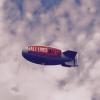Do any of these photos exhibit deep depth of field?
-
Featured Topics
-
Topics
-
6
-
3
-
0
-
2
-
0
-
bleedpurple ·
Posted in Storage Devices2 -
geoffery ·
Posted in Troubleshooting1 -
IPQ ·
Posted in Troubleshooting1 -
Joey__ ·
Posted in Troubleshooting4 -
83y ·
Posted in Troubleshooting0
-


.png.255947720031a641abdac78e663b681c.png)

















Create an account or sign in to comment
You need to be a member in order to leave a comment
Create an account
Sign up for a new account in our community. It's easy!
Register a new accountSign in
Already have an account? Sign in here.
Sign In Now